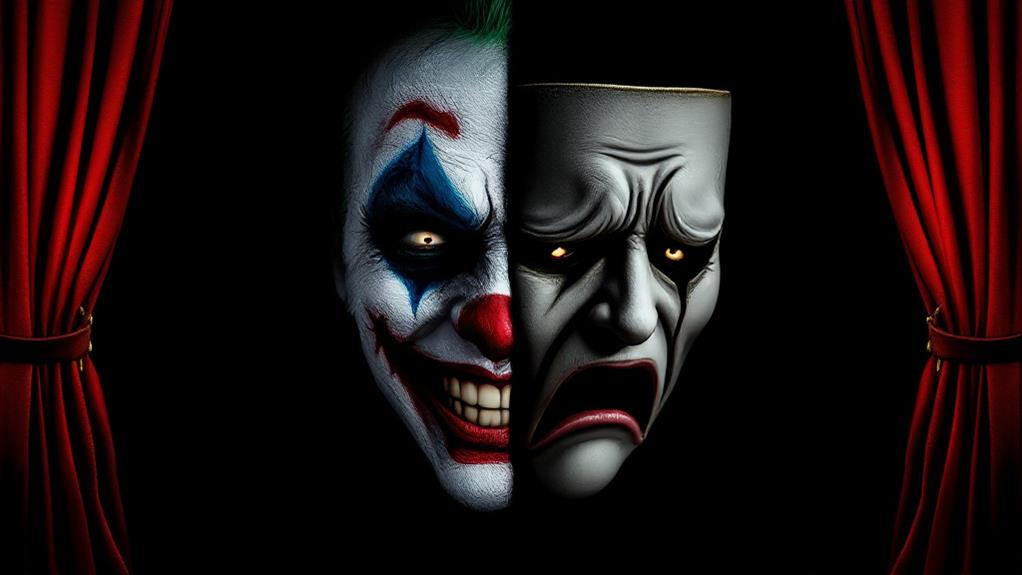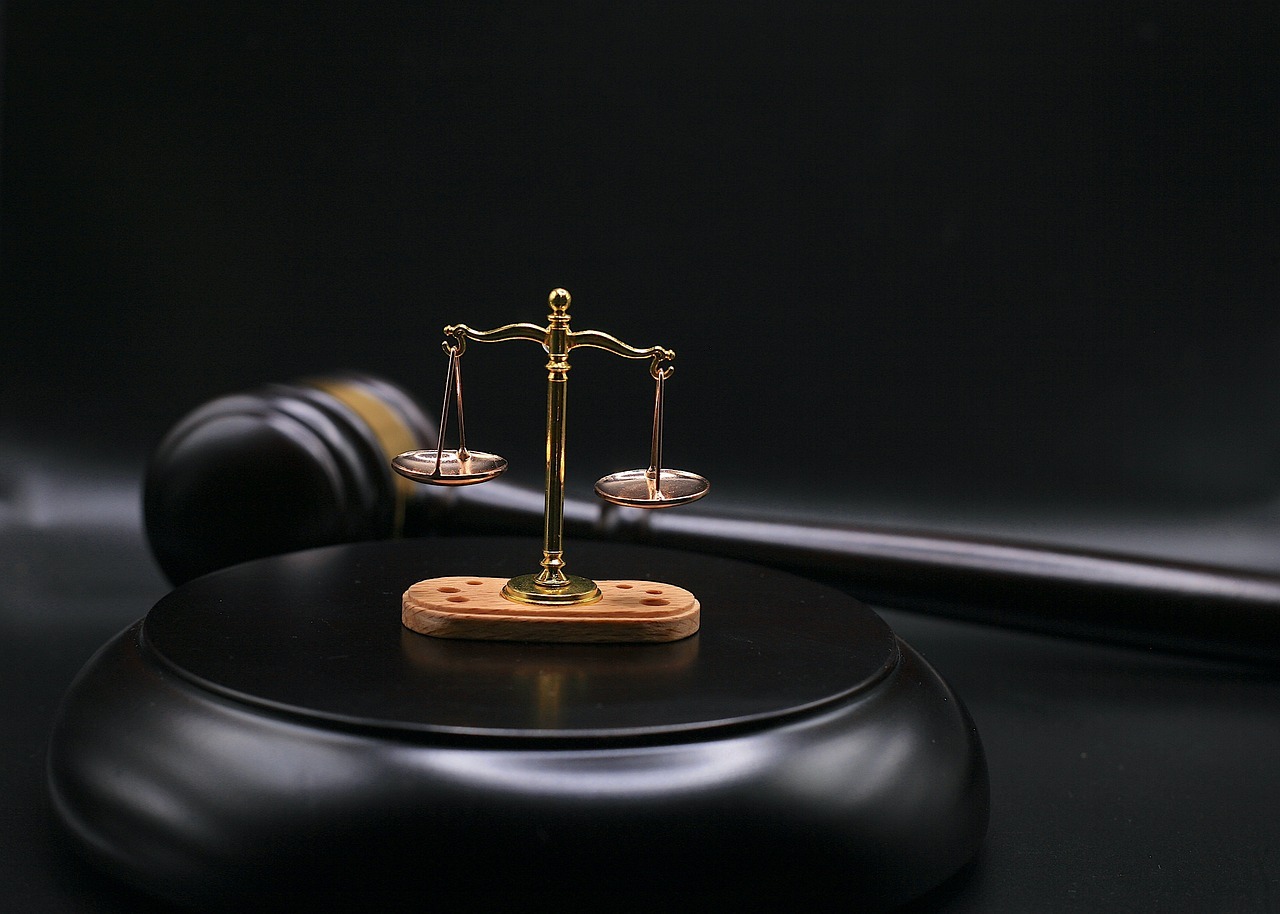The Different Types of Comedy Films
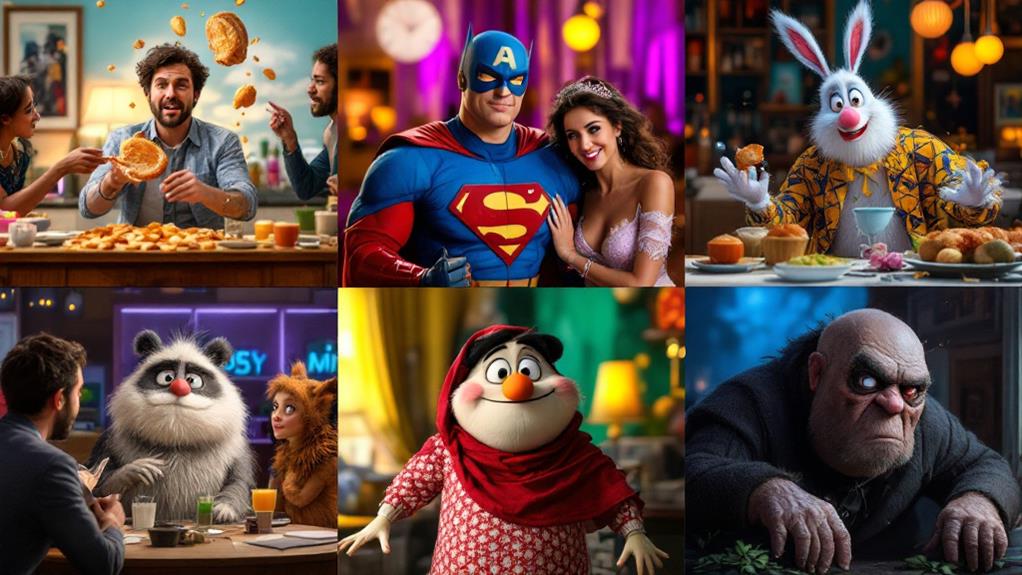
Comedy films come in various flavors to tickle your funny bone. You'll find slapstick and physical humor rooted in vaudeville, witty screwball comedies from the 1930s, and parodies that poke fun at other movies. Dark comedies tackle taboo subjects with a humorous twist, while romantic comedies focus on relationships and clever dialogue. For an adrenaline rush mixed with laughs, action comedies blend high-stakes sequences with witty banter. Mockumentaries and found footage comedies blur the line between reality and fiction, offering a unique viewing experience. There's a whole world of laughter waiting for you to discover in the domain of comedy films.
Origins of Comedy in Film
From the early days of cinema, comedy films have been mesmerizing audiences with their unique blend of humor and entertainment. You can trace the roots of this beloved genre back to the vaudeville stage and silent era, where iconic performers like Charlie Chaplin, Buster Keaton, and the Three Stooges first honed their craft.
In those early years, slapstick comedy reigned supreme. This style, characterized by exaggerated physical stunts and visual gags, was perfectly suited to the limitations of silent film. As you watch these classic comedies, you'll notice how they rely on physical humor to tell their stories without the need for dialogue.
These comedic pioneers played a pivotal role in shaping the film industry, helping to develop and diversify the genre. As cinema evolved, so did comedy films. They adapted to changing tastes and incorporated elements from other genres, such as romance, action, and satire. This flexibility allowed comedy to remain relevant and popular throughout the years, eventually giving rise to subgenres like screwball comedy and parody, which continue to delight audiences today.
Slapstick and Physical Humor
Slapstick and physical humor stand as cornerstones of comedy film history. You'll find these elements deeply rooted in vaudeville theater and early silent films, where pioneers like Charlie Chaplin, Buster Keaton, and The Three Stooges commanded the art of making audiences laugh through exaggerated physical stunts and pratfalls.
When you watch a slapstick sequence, you're witnessing a carefully orchestrated display of chaotic energy and visual absurdity. Characters often find themselves in increasingly outrageous situations, their bodies becoming instruments of comedy. The performers' precise timing and physicality are vital, as they willingly put themselves at risk to deliver the perfect comedic bit.
While slapstick comedy reached its peak in the early 20th century, it's still an essential tool in modern filmmaking. You'll see directors using physical humor to enhance scenes, injecting kinetic energy that heightens the overall comedic impact. From classic pie-in-the-face gags to elaborate chase sequences, slapstick continues to evolve, proving that sometimes, laughter is best served through the universal language of physical comedy.
Screwball Comedies
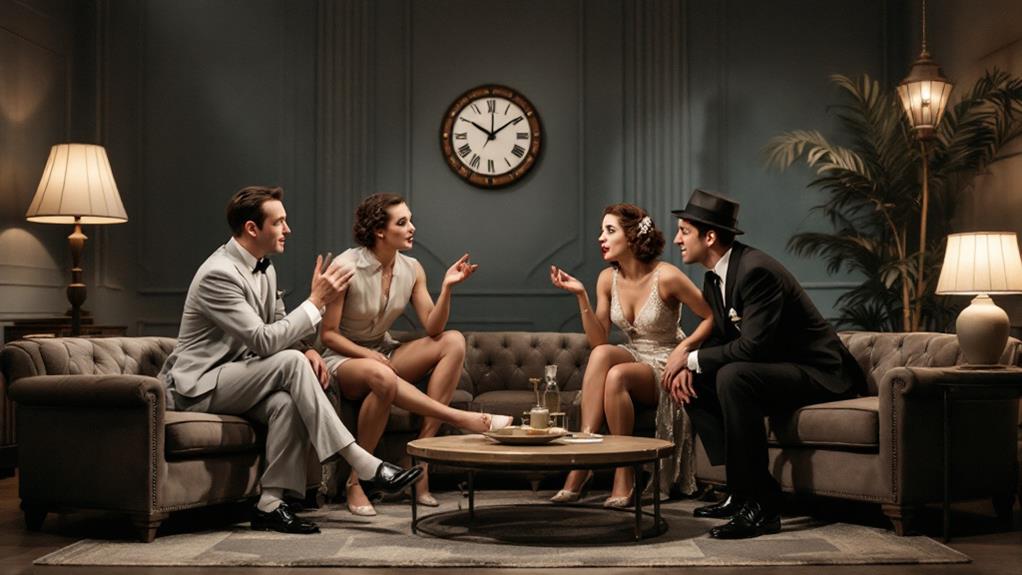
The screwball comedy genre burst onto the scene in the 1930s, offering a witty and fast-paced alternative to slapstick humor. These films enthralled audiences with their rapid-fire dialogue, mistaken identities, and romantic storylines. You'll find that screwball comedies often feature a battle of the sexes dynamic, pitting strong-willed, career-focused female leads against their male counterparts.
What sets screwball comedies apart is their unique blend of romance and comedy, exploring themes of class conflict and gender role reversals through a humorous lens. Despite being set against the backdrop of the Great Depression, these films maintained an optimistic outlook.
Iconic movies like "It Happened One Night," "Bringing Up Baby," and "His Girl Friday" helped shape the genre and left a lasting impact on modern romantic comedies. You'll notice that screwball comedies challenged conventional romantic film norms of the era by prominently featuring independent female characters.
The genre's influence extends far beyond its heyday in the 1930s and 1940s, with its clever writing and unconventional approach to romance continuing to inspire filmmakers and delight audiences today.
Parody and Satire
In contrast to screwball comedies, parody and satire films take a more biting approach to humor. These comedies use mockery and wit to poke fun at other films, genres, or societal issues. You'll find that parody films often directly lampoon specific movies or cultural phenomena, while satirical comedies employ humor to critique broader societal or political topics.
Mel Brooks is an expert of parody, with classics like Blazing Saddles and Young Frankenstein. These films cleverly mock Western and horror genres, respectively, using exaggerated characters and situations to elicit laughter. Another popular parody subgenre is the mockumentary, exemplified by This Is Spinal Tap, which uses a documentary style to humorously depict a fictional rock band.
Satire, on the other hand, often tackles weightier subjects. Dr. Strangelove, for instance, uses dark humor to skewer Cold War politics and nuclear proliferation. These films challenge you to think critically about societal issues while entertaining you with their comedic elements. Whether you're watching a lighthearted parody or a biting satire, these films offer a unique blend of humor and social commentary.
Dark Comedy
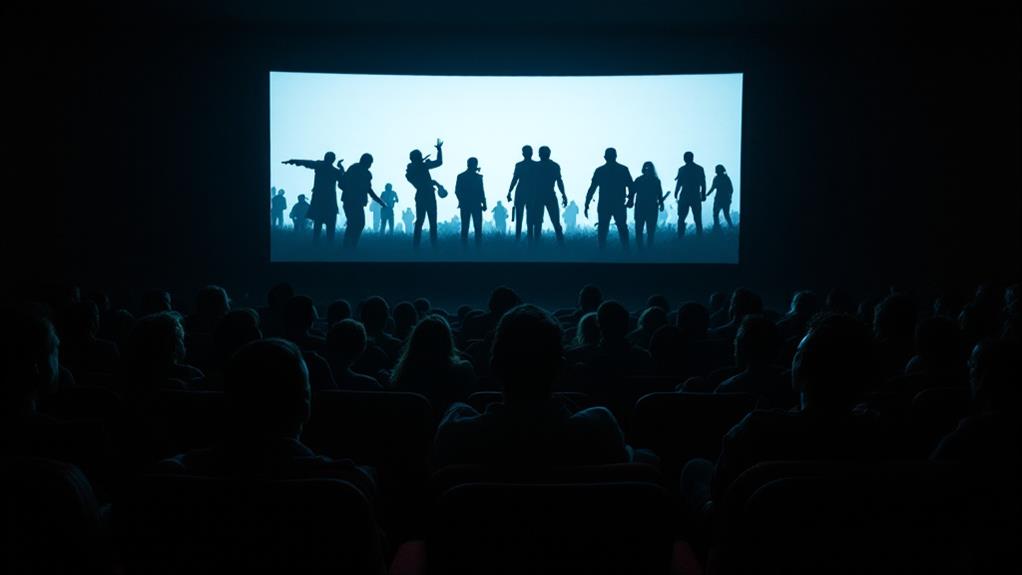
Many film enthusiasts consider dark comedy to be one of the most challenging and intriguing subgenres in the comedy range. Also known as black comedy, this style investigates taboo or disturbing subject matter through a humorous lens. You'll find these films tackling themes like death, violence, social misfits, and moral ambiguity, often subverting your expectations and societal norms.
Dark comedies walk a fine line between tragedy and comedy, creating a tone that's both unsettling and hilarious. Classics like Dr. Strangelove, Heathers, and In Bruges exemplify this delicate balance. As you watch, you'll notice how they use humor to confront serious issues in unconventional ways.
One of the genre's strengths is its ability to provide social commentary. By laughing at the darkest aspects of human nature, you're invited to critique society and the human condition. However, creating a successful dark comedy isn't easy. It requires skillful writing and direction to maintain the balance between morbid and amusing without crossing into insensitivity. When done right, you'll find yourself laughing at things you never thought you would.
Romantic Comedies
From lighthearted banter to heartwarming moments, romantic comedies have captured audiences' hearts for generations. These love stories, often referred to as "rom-coms," are a staple of the comedy genre, focusing on the relationship between two main characters who overcome obstacles to find happiness together.
Romantic comedies rely on strong chemistry between lead actors and clever dialogue that examines the dynamics of relationships. You'll often find mismatched or reluctant lovers at the center of these films, with their expedition towards love forming the core of the original story. The genre has a rich history dating back to classical Hollywood, with iconic examples like "When Harry Met Sally" setting the standard for modern rom-coms.
In recent years, you've likely noticed that romantic comedies have evolved to include more diverse viewpoints and updated gender dynamics. While the formula remains familiar, filmmakers are finding new ways to keep the genre fresh and relevant. Whether you're a fan of classic rom-coms or prefer more contemporary takes, these films continue to offer a perfect blend of humor and heart.
Action Comedy Films
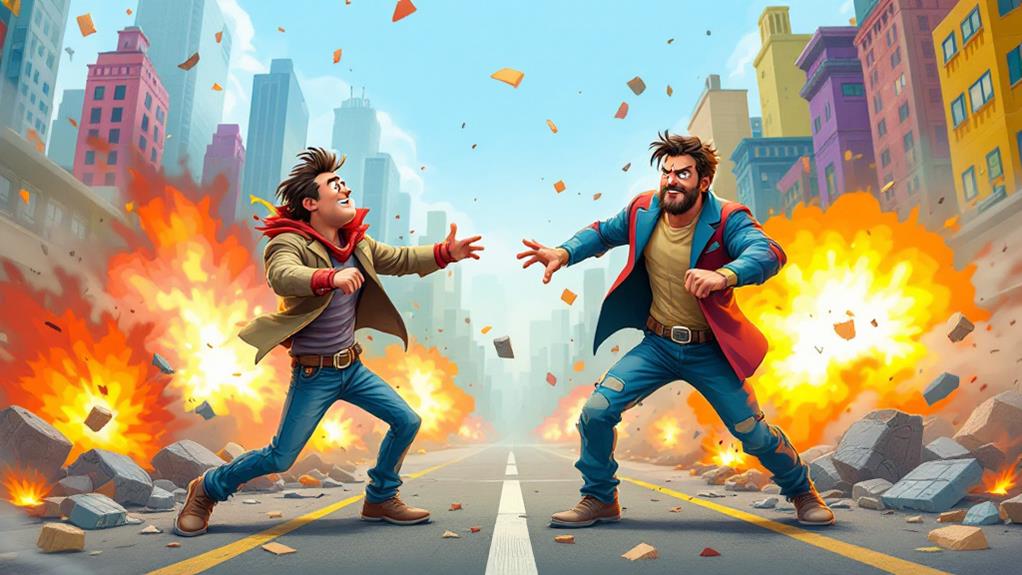
Adrenaline-pumping excitement meets side-splitting laughter in action comedy films. This genre skillfully blends high-stakes action sequences with witty banter and slapstick gags, creating a unique cinematic experience. You'll find yourself on the edge of your seat one moment and doubled over with laughter the next.
Action comedy films often rely on the charismatic chemistry between lead actors to drive both the plot and the humor. Think of the influential duos in franchises like Rush Hour or Lethal Weapon. These partnerships are pivotal to the genre's success at the box office.
One of the most iconic figures in action comedy is Jackie Chan. His films, including Police Story and Rush Hour, showcase his incredible ability to fuse martial arts with physical comedy. You'll be amazed at how seamlessly he integrates humor into intense action scenes.
As you watch these films, you'll notice how challenging it can be for filmmakers to balance thrilling set-pieces with comedic elements. When done right, the result is a perfect blend of an Action Film's excitement and a comedy's ability to make you laugh out loud.
Mockumentaries and Found Footage
Two innovative comedy subgenres, mockumentaries and found footage films, have taken the art of deception to hilarious new heights. These formats blur the line between reality and fiction, drawing you in with their apparent authenticity before surprising you with absurd situations.
Mockumentaries, pioneered by films like "This Is Spinal Tap" and "Best in Show," use improvisation and faux interviews to create a sense of verisimilitude. You'll find yourself laughing at the expertly crafted scenarios that seem almost too real to be fake.
Found footage comedies, such as "Project X" and "Chronicle," employ shaky camerawork and first-person viewpoints to heighten your sense of immersion. These films make you feel like you're right in the middle of the action, experiencing the hilarity firsthand.
Both styles offer a unique comedic approach, allowing filmmakers to investigate themes of celebrity culture, social norms, and the human condition through unconventional narrative structures. As you watch, you'll be constantly questioning what's real and what's not, adding an extra layer of enjoyment to the comedic experience.

